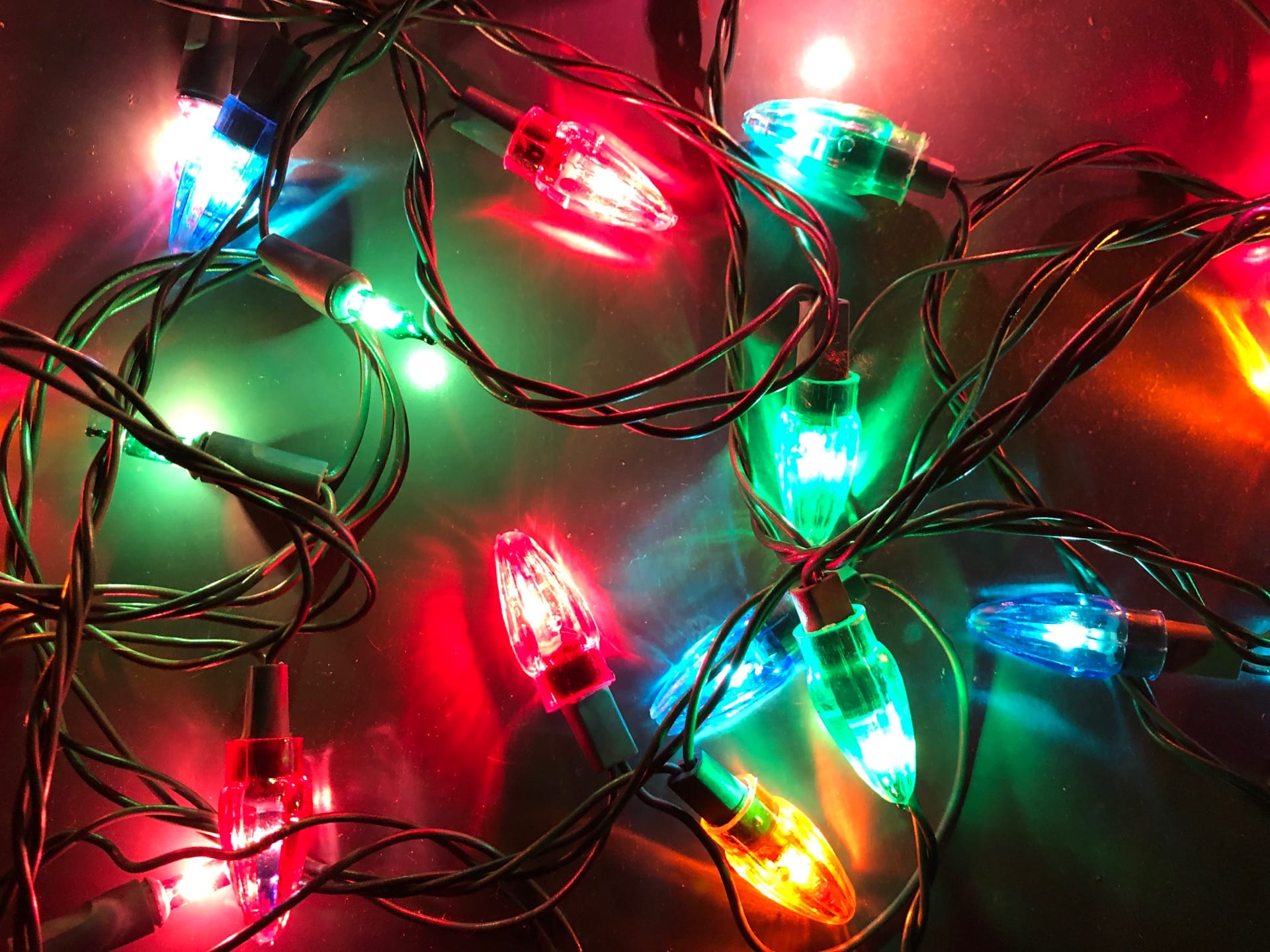Ohio State University Extension, Highland County
Agriculture and Natural Resources/Community Development Extension Educator
November 20, 2018
Deck the halls with strands of lights, let your holidays be merry and bright! Now that we have enjoyed Thanksgiving, thousands of individuals in the United States will begin to decorate their homes for the holidays in December. Holiday decorations can brighten the bleak December landscape, but safety precautions should be taken into consideration so you can avoid a holiday disaster.
According to the Electrical Safety Foundation International (ESFI) 86 percent of Americans decorate their homes for a winter holiday1. The National Fire Protection Association estimated fire departments in the United States responded to 840 home structure fires that began with holiday decorations, and an additional 200 home structure fires that began with Christmas trees annually. In fact, 19 percent of decoration-related fires occur in December, and 24 percent of decoration-related fires in December occur in the living or family room3.
While holiday decorations can be dangerous, following several simple safety guidelines can help you prevent fires and electrical safety issues. Safety guidelines for holiday lighting include:
- Use outlets that are protected with ground fault circuit interrupters (GFCIs)
- Extension cords should be rated for the intended use (indoor or outdoor) and should not be run through doorways or windows
- In order to avoid blowing fuses, you should not connect more than three strands of lights together
- Avoid power lines when decorating outdoors
- Light strands should be used in accordance with their rating for indoor or outdoor use
- Attach lights in a manner that does not impact the protective coatings on the wire
- Check strands of lights for broken bulbs, exposed wire, or other defects to the strands
- Do not use light strands for weight bearing or for hanging ornaments
- Make sure to store light strands neatly after use to avoid tangling
- Avoid hanging lights in or around standing water or areas of high moisture
- Use ladder safety techniques to avoid falls when hanging lights
- Keep all fresh-cut trees and greenery watered to prevent them from drying out
While you are making your holiday decorations and checking them twice, think about your energy use and how you could become more efficient in your power consumption this holiday season. According to the Dayton Power and Light Company (DP&L), light emitting diode (LED) lights use 70 percent less energy in comparison to incandescent lights, and LEDs last longer as well. “LEDs stay cool to the touch” which reduces the risk of fires and the bulbs are more resistant to breakage because they are made from epoxy instead of glass, according to DP&L2. They also estimate that the cost of lighting a six-foot Christmas tree for 12 hours a day, for 40 days, to be $0.27 with LED C-9 lights or $10 with incandescent C-9 lights. Even using mini-lights the LED lights use less electricity, with LEDs costing $0.82 versus incandescent costing $2.74 for the same time period of usage.
Another way to become more efficient is to use timers so your lights are on only when you want them to be on. By limiting the amount of time your decorations are illuminated will save you additional money in energy costs. Inexpensive, manual timers or more advanced app-controlled outlet timers are available for both indoor and outdoor use. App-controlled timers can also assist with turning lights on or off when you are away celebrating the holidays with family and friends.
In conclusion, holiday lighting can pose a safety danger when safety guidelines are disregarded. Incorporating the safety tips mentioned above to ensure the proper use and function of holiday decorations can prevent your holiday season from becoming bah humbug this year. Spread good cheer throughout the neighborhood by incorporating safety tips mentioned above and by using creativity in your decorations this holiday season. For more information on lighting safety or energy efficiency, contact the Highland County Extension Office at 937-393-1918.
References:
- Electrical Safety Foundation International. (2015). ESFI 2013 Holiday Survey. Retrieved from https://www.esfi.org/resource/esfi-2013-holiday-survey-343
- Dayton Power and Light Company. (2018). Enjoy the season and stay safe. Retrieved fromhttps://www.dpandl.com/education/safety-tips/holiday-safety/
- National Fire Protection Association. (2017). Home Christmas Tree Fires. Fact Sheet. Retrieved from: https://www.nfpa.org/-/media/Files/News-and-Research/Fire-statistics-and-reports/Fact-sheets/ChristmasTreeFactSheet.ashx?la=en
Upcoming Events:
The next Highland County Monthly Extension Program will be held on December 10, 2018, at 10:00 A.M. at the Ponderosa Steakhouse in Hillsboro, Ohio. Gary Ludwig from the USDA APHIS Wildlife Services will be speaking on managing Black Vulture Predation. Please RSVP and plan to attend.
A fifth Beef Quality Assurance Training will be held at Union Stockyards on Tuesday, January 22, 2018, at 6:30 P.M. Please RSVP to the Highland County Extension Office at 937-393-1918.
Fertilizer and Pesticide Recertifications:
February 19, 2019
Ponderosa Banquet Center, 545 S. High Street, Hillsboro, Ohio 45133
5:00 pm to 6:00 pm Fertilizer Recertification – Private and Commercial
6:30 pm Pesticide Recertification (Core, 1, 2,3, 4, 5, 6) Private Applicators Only
March 4, 2018
Ponderosa Banquet Center, 545 S. High Street, Hillsboro, Ohio 45133
10:00 am to 11:00 am Fertilizer Recertification – Private and Commercial
11:30 am Pesticide Recertification (Core, 1, 2,3, 4, 5, 6) Private Applicators Only
Registration details will come in the mail from the Ohio Department of Agriculture. Registration for OSU Extension Pesticide and Fertilizer and your renewal application for ODA Pesticide/Fertilizer must both be completed. Meals will be included at each recertification training at Ponderosa.
